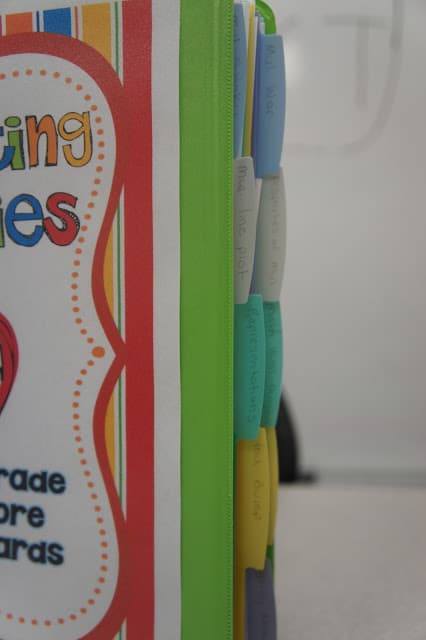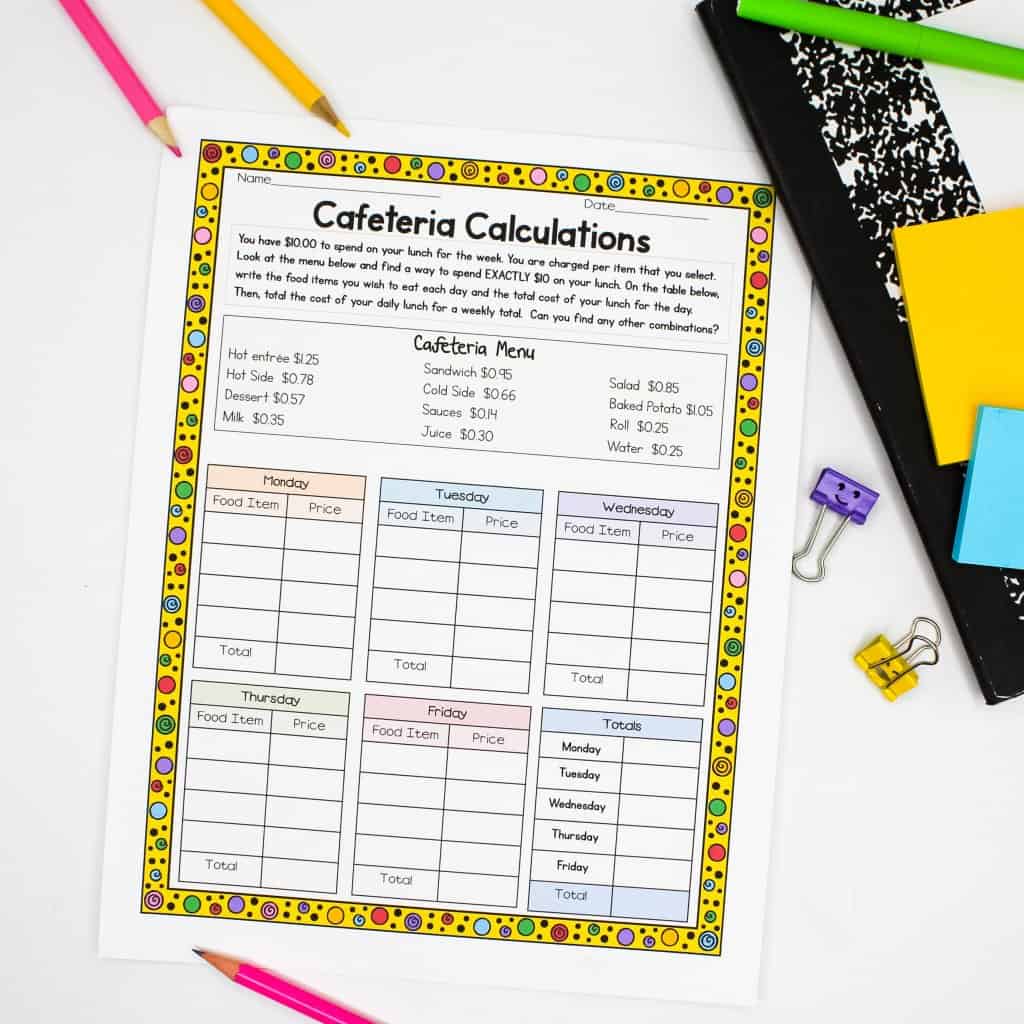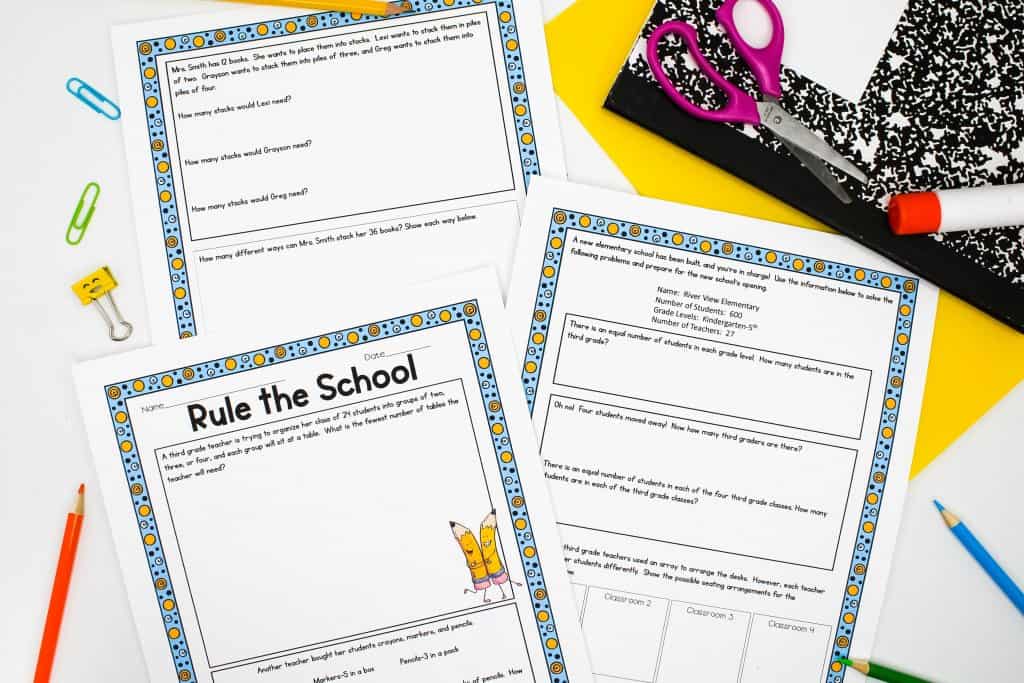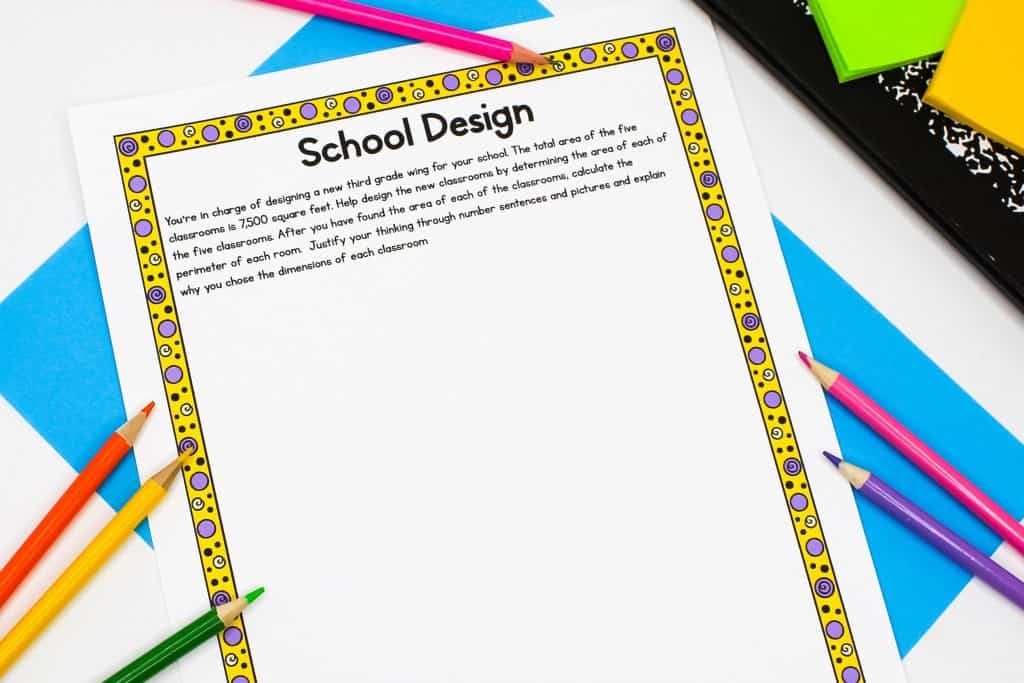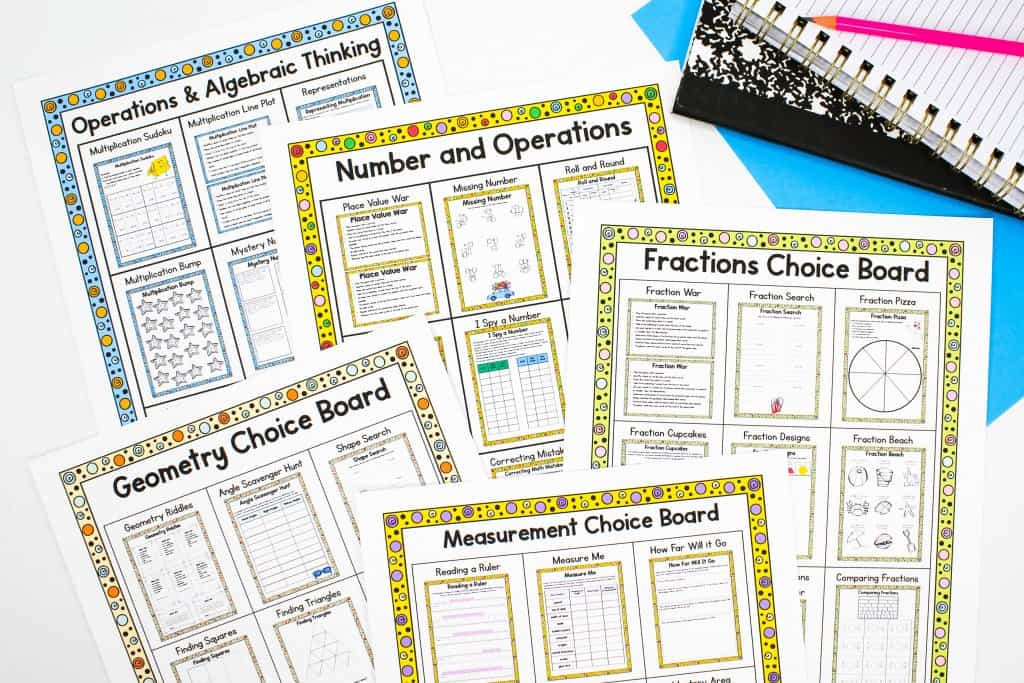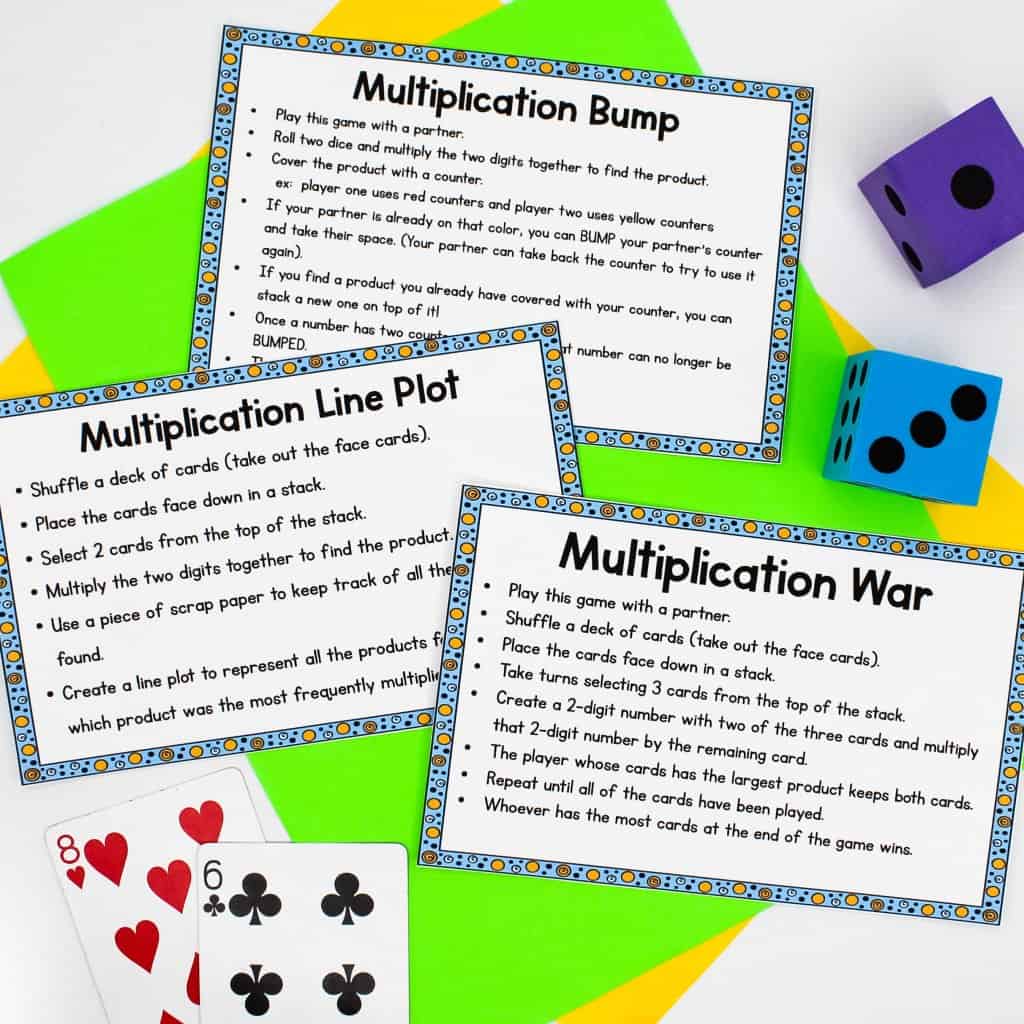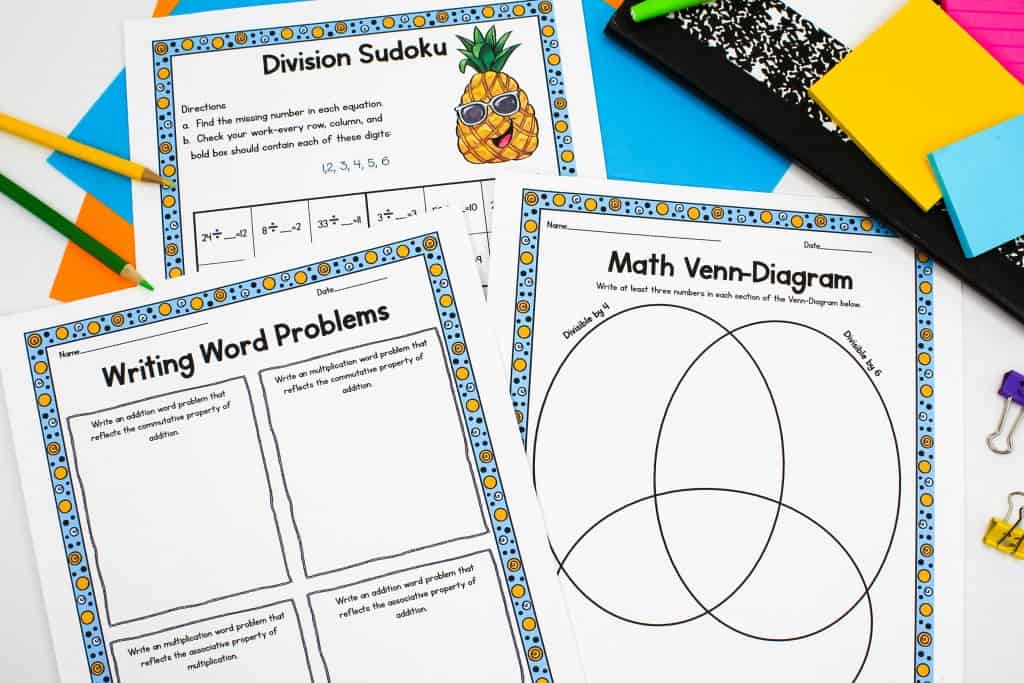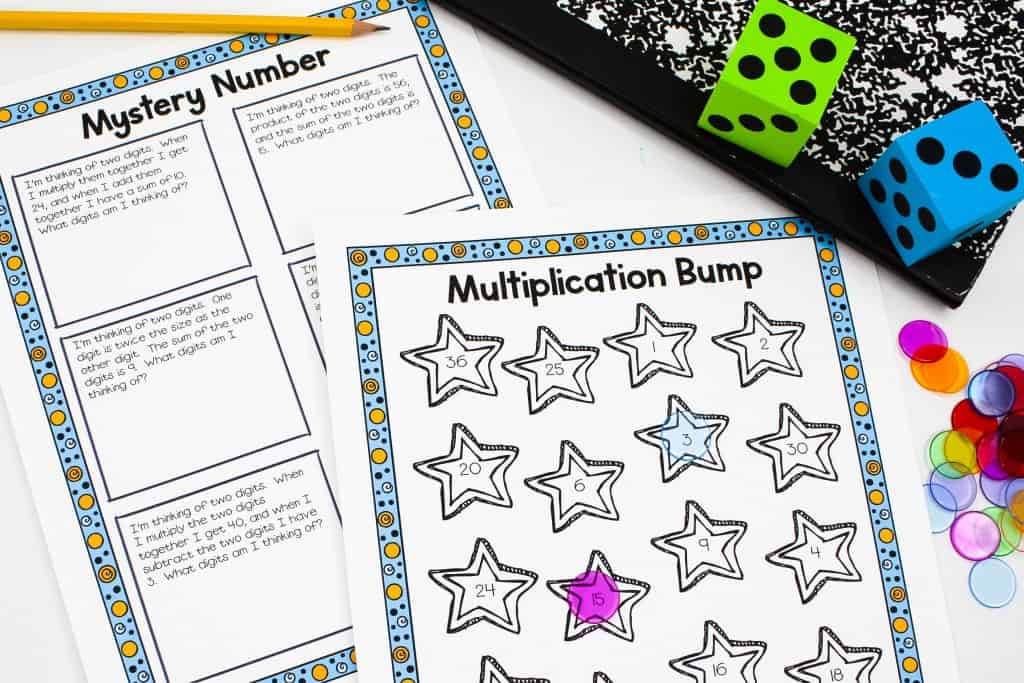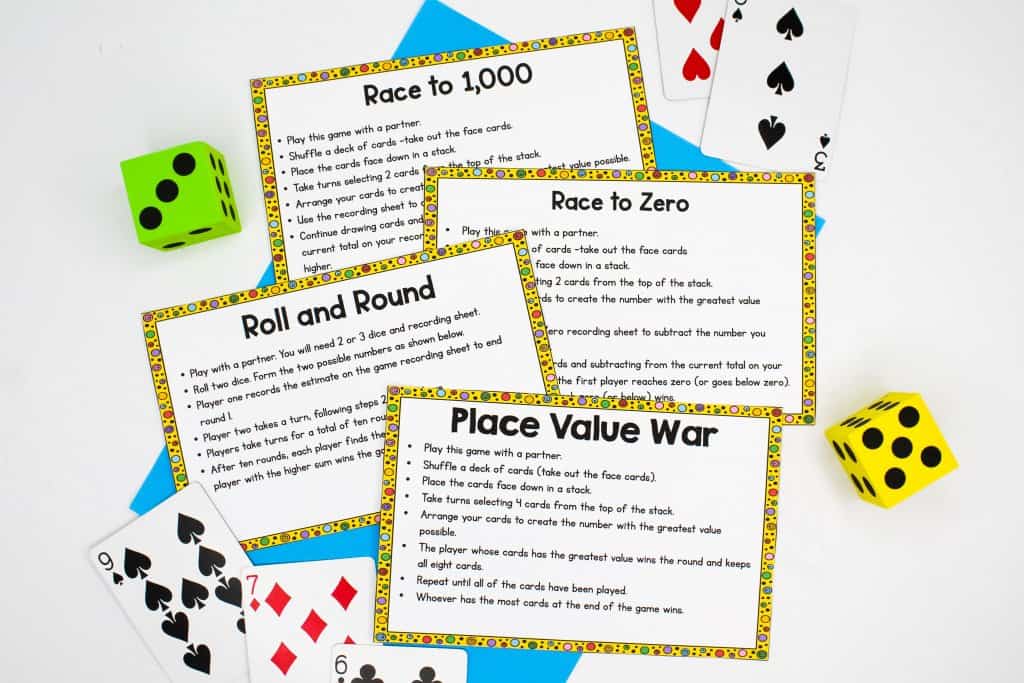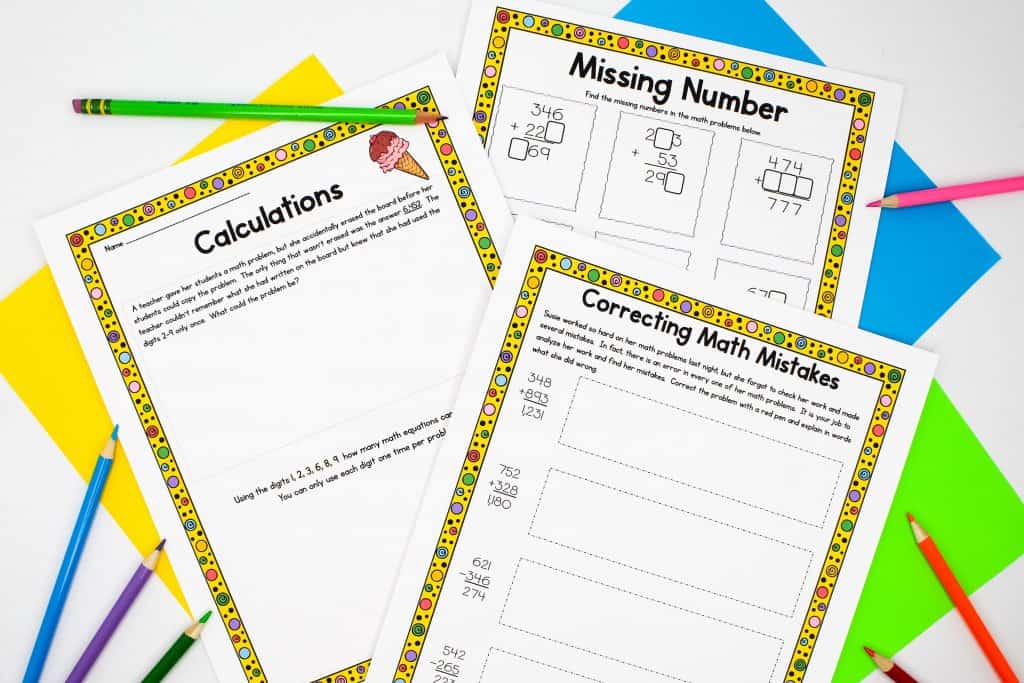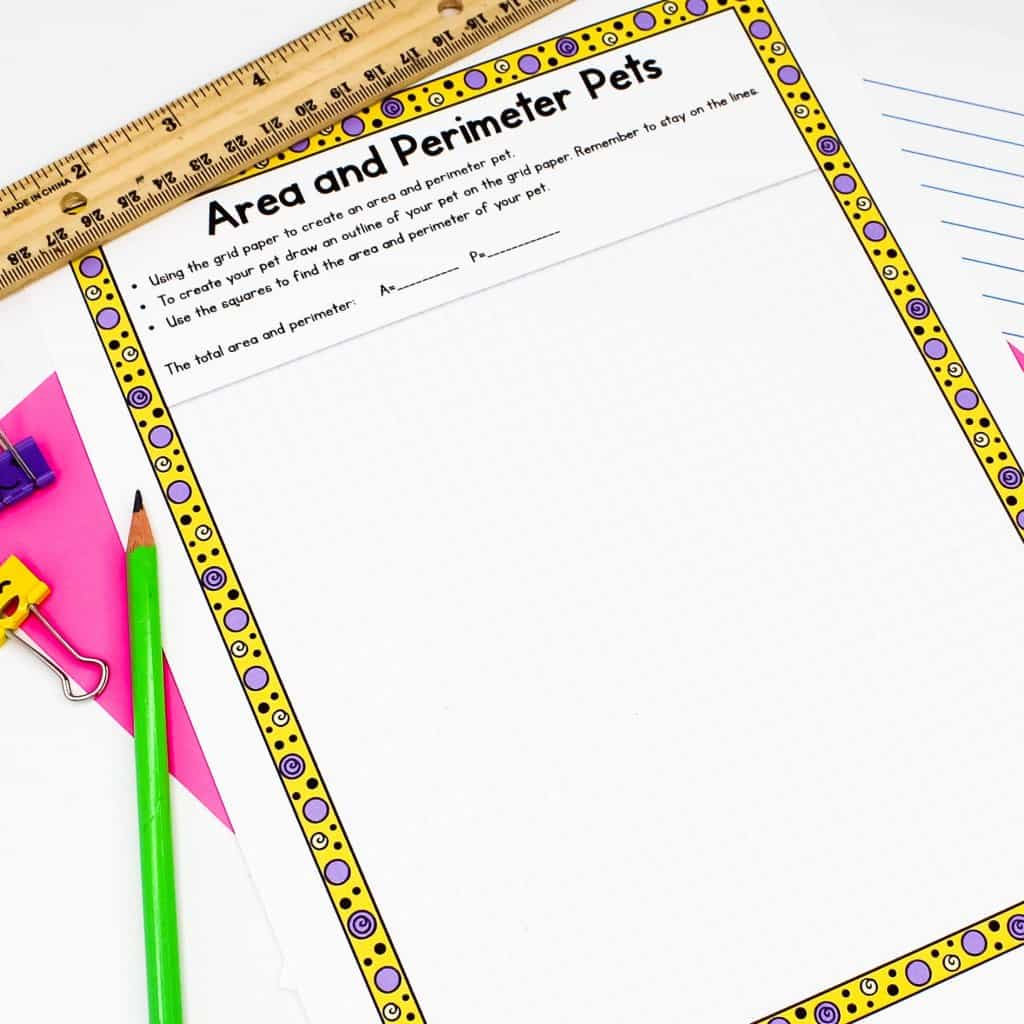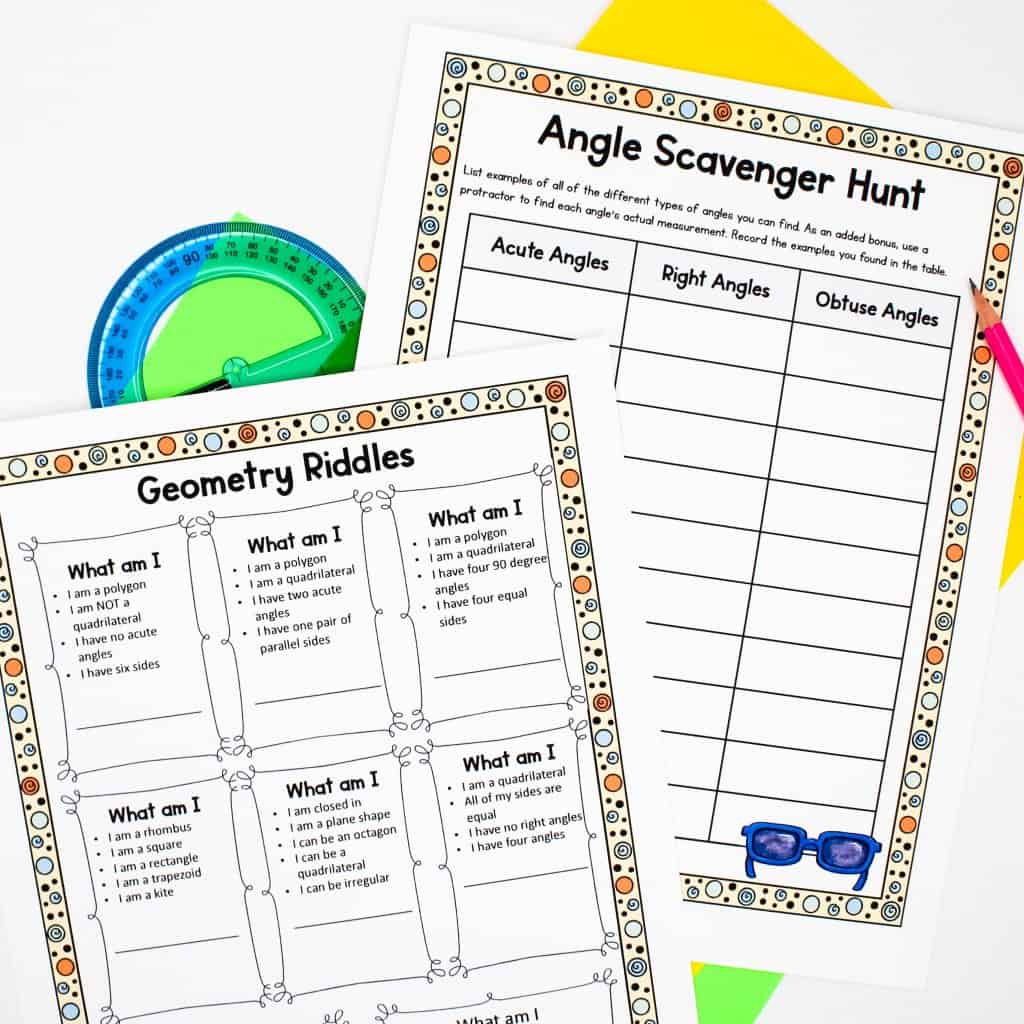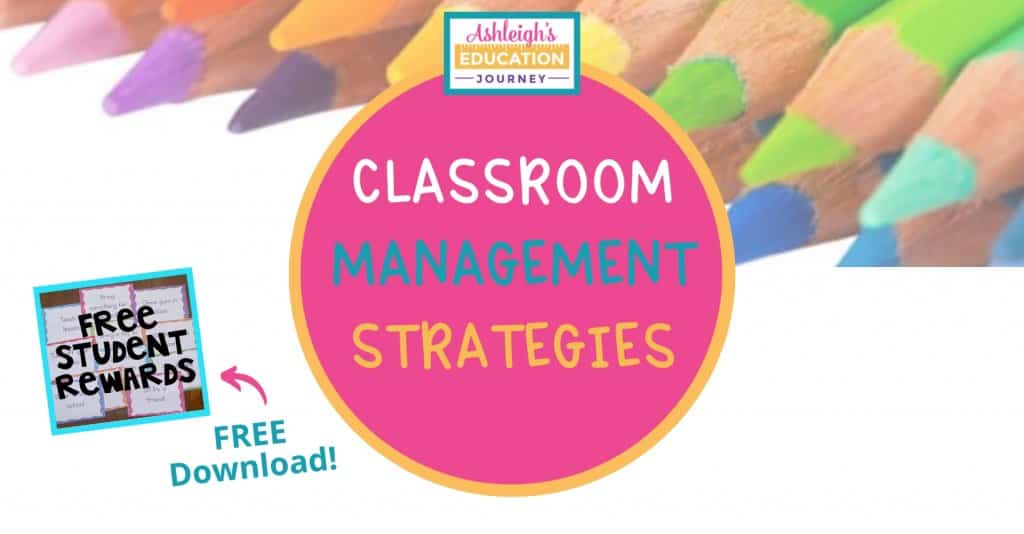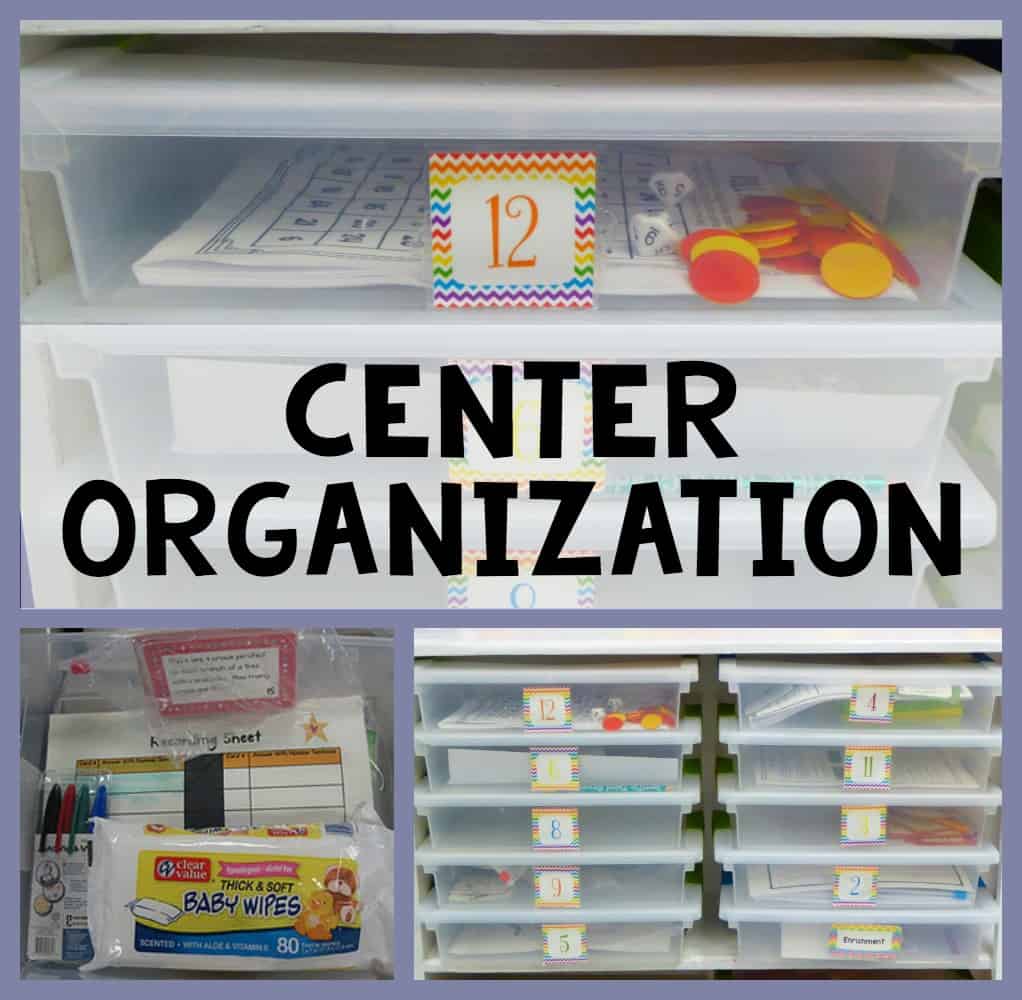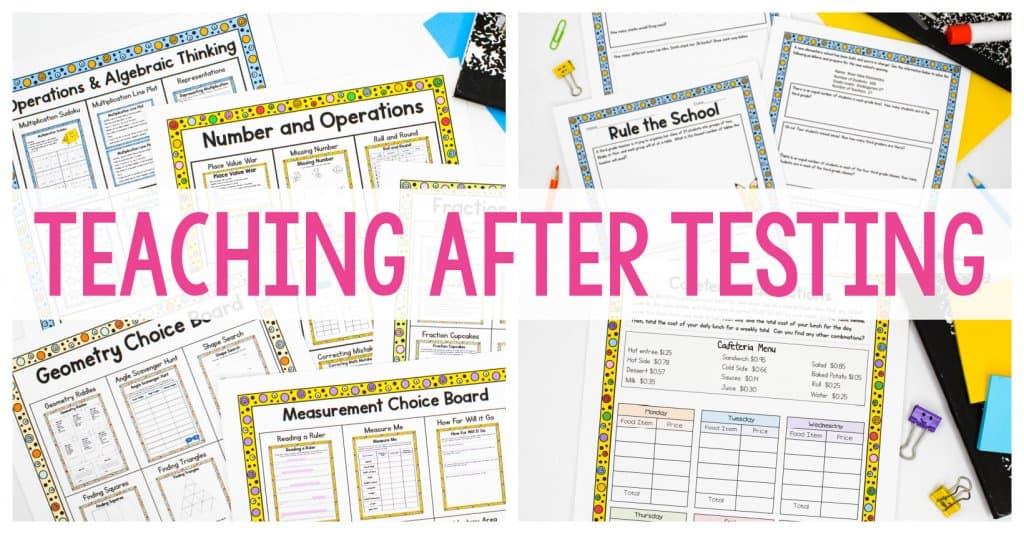 By the time we finish testing, I’ve taught all, or most, of the standards, so I have a little more flexibility than normal. I certainly don’t want student learning to stop, but it keeping our momentum can be a challenge.
By the time we finish testing, I’ve taught all, or most, of the standards, so I have a little more flexibility than normal. I certainly don’t want student learning to stop, but it keeping our momentum can be a challenge.
As the school year winds down, it’s beneficial to both reteach and enrich. Student work should be challenging and engaging-especially when everyone’s mind is on summer vacation and not school! And to be honest, at this point of the year I don’t want to plan anything that requires a significant amount of preparation. I think I’ve worn my laminator, so the less prep work the better!
One of my favorite resources for teaching after testing is my Culminating Math Activities and Choice Boards, because it provides five weeks of math instruction! It’s organized by domain: numbers and operations, algebraic thinking, fractions, measurement, and geometry. For each domain, there is a culminating performance task that is rigorous and requires problem solving and critical thinking.
One of the culminating tasks is the Cafeteria Calculations activity where students use a lunch menu to determine how to spend exactly $10 on their lunch. Another activity is Rule the School where students use multiplication and division to set up classrooms (roster students, set up desks, arrange seating in the cafeteria, etc). This provides an authentic real-word context for students.
In Fraction School students use fractions to design six different classrooms. There is also a space for students to add their own creative twist. In School Design students use area and perimeter to plan the layout of a new third grade wing for their school. In all assignments students justify their thinking through number sentences and pictures.
There is also a choice board for each domain. I have students begin the choice board activities after completing the performance task. This lets everyone work at their own pace and is perfect for early finishers. There are nine unique activities for each domain, so there is a total of 45 activities. You can set your own rules on how students should complete the choice board activities-3 in a row, tic tac toe pattern, all activities, etc.
Since there are 45 activities I won’t share them all! The directions for math games that don’t require a recording sheet are written on half sheets paper that students can use the get started. Then the activities that require a require a recording sheet such as Multiplication Bump, Division Sudoku, and Mystery Number are on full sheets of paper.
The same set-up is in the Numbers and Operations of Base Ten activities. These tasks focus on place value, rounding, addition, and subtraction. Best of all, the games don’t require a lot of prep! They can be played with a deck or cards or dice! That makes is so much easier to keep everything organized!
Several of the fraction activities let students use their creativity! They design a fraction pizza and use pattern blocks to create a fraction design. There are also cupcakes that students get to decorate. Since fraction standards do vary from state to state you can certainly add on to these activities to make them more or less challenging for your students.
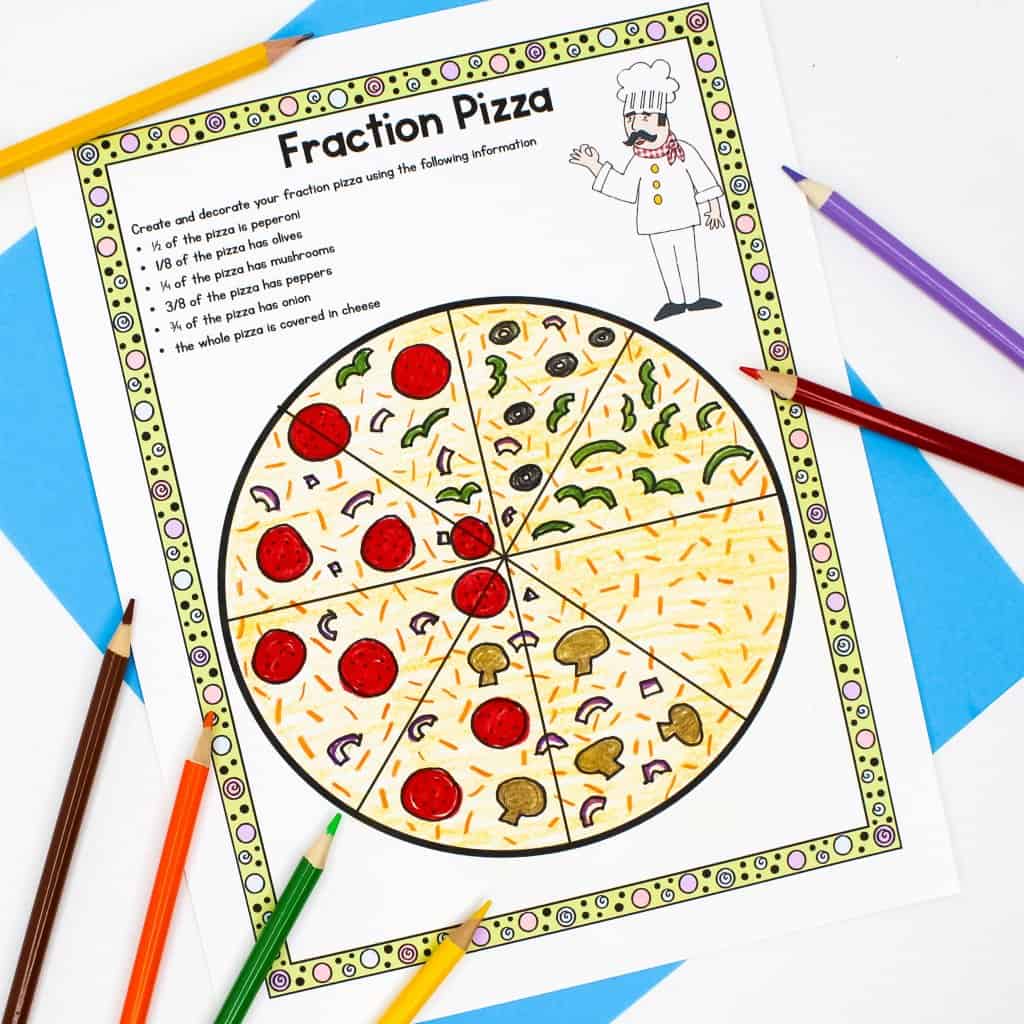
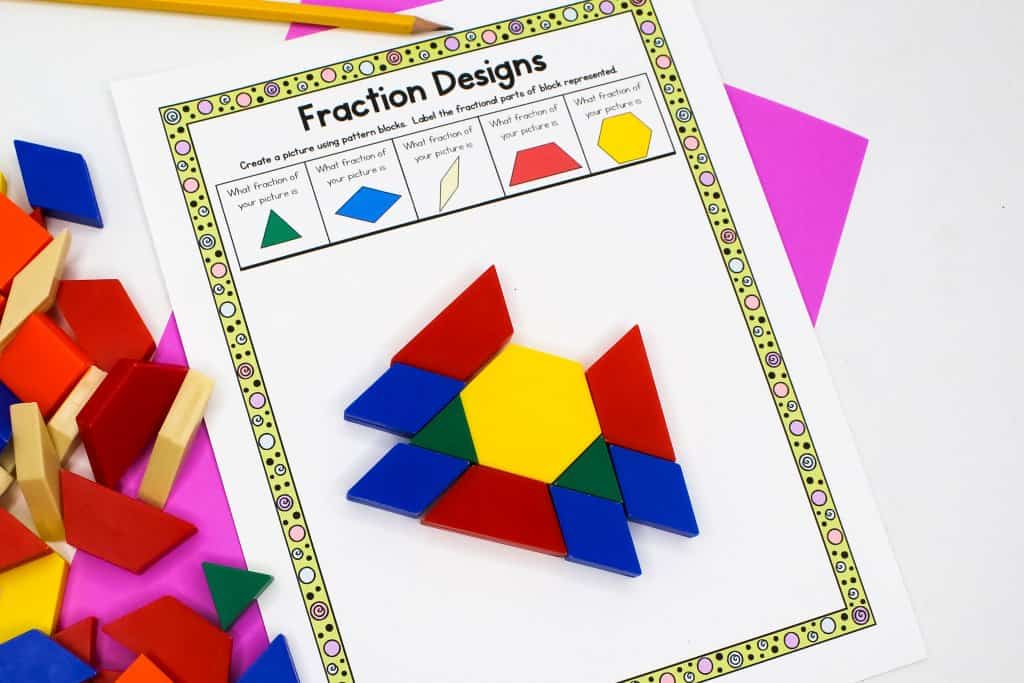

I love the Measurement sense choice board activity, because choosing the best unit of measurement is always a challenge for students. In the activity there are four paragraphs, and students circle the units of measurement that don’t make sense and replace the unit with a better, more logical, choice. It ties in nicely with reading comprehension too! Students always love the area and perimeter pets and the included grid paper is a huge help.
I kind of feel bad for making geometry the last domain, because there are a lot of fun activities here! Once again, you can absolutely differentiate these tasks. For example, third graders would more than likely not know how to use a protractor to measure angles so in the Angle Scavenger Hunt they would only look for acute, right, and obtuse angles. However some students might be ready to use a protractor for a more advanced scavenger hunt.
To keep everything organized, I bought a three ring binder for each domain.
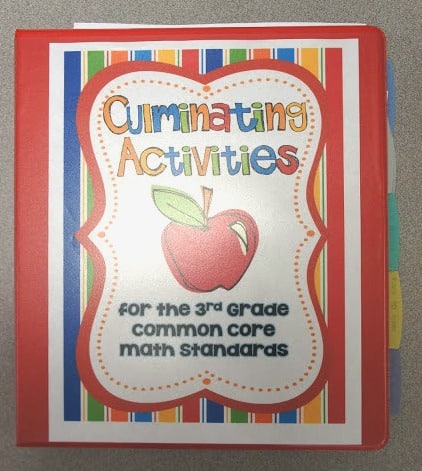
I added a page divider for each choice board activity. Yes, I did just write the titles on the tab. There are few things that frustrate me more than trying to print on those tabs correctly. I jam my printer every single time. I’ll take all the advice I can get!
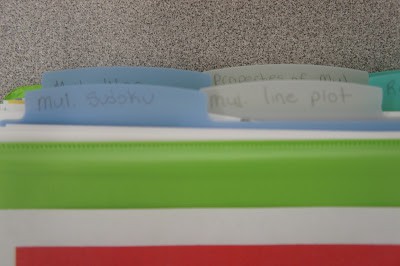
Then I printed copies of each of the activities and placed them inside the pocket of the page divider. This is where I will keep all of my copies, and my students will select one activity at a time from the pockets.
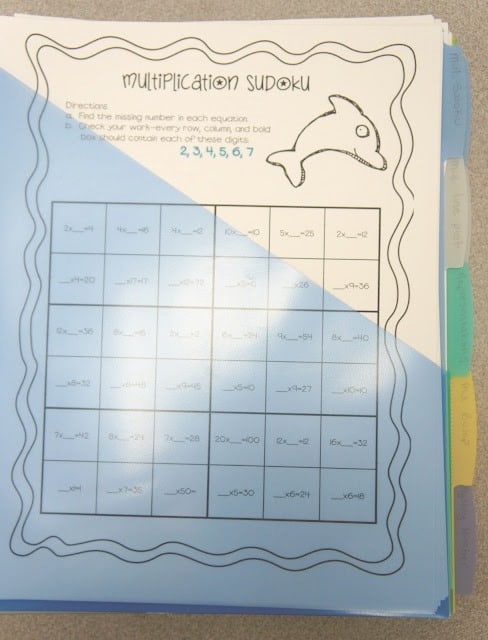
By the time I finished adding everything to the notebooks, the 1-inch binder was full. I don’t think I needed anything larger, but I wouldn’t recommend anything smaller either.
